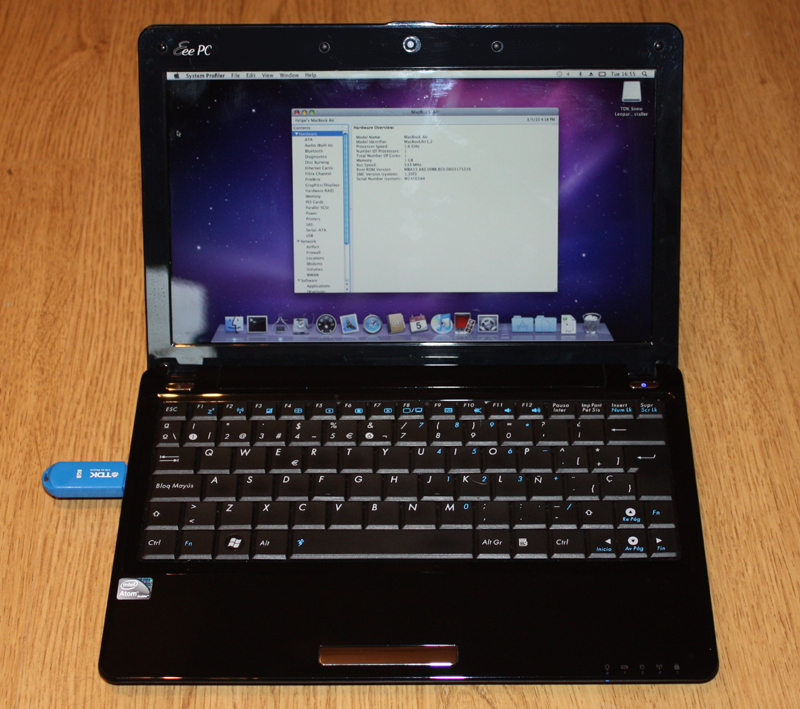Install Windows 8 On Eee Pc 701 Spec

The days of Windows being a system hog are gone. So modest are the requirements for Windows 10, you may be able to. But just how low can Windows 10 go when it comes to PC specs?
May 27, 2017 - The Debian Eee PC project's goal is full support for the ASUS Eee PC in Debian. The following pages document the supported way to install, configure and use Debian on your Eee. Chapter 1: Introducing the Eee PC. About This User's Manual. Gives you information on how to install and optimize Windows®. XP on your Eee PC. The reset button is unavailable on Eee PC 4G Surf model.
Since people have been loading Windows 10 onto hardware dating back to 2003 - eons ago on the PC refresh timescale. Here are the low-end and long-in-the-tooth machines that proved capable of running Windows 10. Netbooks Given the abundance of cheap Intel Atom-based netbooks out there, there's a good deal of interest in whether these budget mini-laptops have the chops to handle Windows 10.

Interestingly, they do seem to be in with a good shot. This on a HP Mini 110 netbook with a 32-bit 1.66GHz Intel Atom N280 processor and 1GB of memory - comparing the speed to that of the machine running Windows XP. Their success should bode well for other users, given the Mini's specs are similar to many other popular 10-inch netbooks, including: the ASUS Eee PC 1000HE, the Toshiba Mini NB205 and the Lenovo IdeaPad S10-2.
• 2014 - Korg Pa3X Le - A professional arranger. Karaoke midi files free download.
Minimum specs • Processor: 1 gigahertz (GHz) or faster • RAM: 1 gigabyte (GB) (32-bit) or 2 GB (64-bit) • Free hard disk space: 16 GB • Graphics card: Microsoft DirectX 9 graphics device with WDDM driver • A Microsoft account and Internet access Caveats Beyond the speed of processor, you will also need a 32-bit or 64-bit CPU that supports three different processor features - PAE, SSE2 and NX. Windows 8.1 also requires support for these, so if your machine runs Windows 8.1, chances are it'll run Windows 10. If you're running Windows 7, you can download the to see if your hardware is up to spec or use the to check if your processor supports these features. Also, the Windows Insider Programme, which will continue after the OS' official release on July 29th, allows anyone to download a Windows 10 build for free to see how it will run on their machine. Another top selling netbook reportedly capable of running Windows 10 is the - albeit with lag in some apps.
You should expect slowdown on these machines, however, as even with the recommended RAM for 32-bit systems, the HP Mini 110 reportedly started to chug when switching between running applications using Windows 10's task view. Drop below the recommended memory, 1GB on a 32-bit system and 2GB on a 64-bit system, and you can expect to struggle.
A with 512MB of RAM took more than 18 minutes to boot and was too sluggish to use comfortably. Another gotcha that seems to have caught some netbook users of Windows 10 is the screen resolution.
Some Windows Store apps will refuse to run on the devices with low resolutions - such as the original HP Mini 110's 1024 x 576 display. However Windows 10 does support.
Overall there are indications that netbooks based on the Intel Atom N280 platform work better than those using the slightly slower Atom N270. Basic tablets If the Microsoft Surface is too expensive for you, then some of the mass market Windows tablets to come out in recent years, such as the and, will also. Machines from the Windows XP era Even 12-year-old hardware that meets the minimum specs can be coaxed into running Windows 10, like a processor, an Asus motherboard with onboard graphics and four DDR 256MB memory modules. But while the machine reportedly could handle smooth cursor movements it wasn't exactly usable, taking 41 seconds to open a folder. How long will the specs stay this low? The more modest requirements of Windows 10 compared to its forebears may, in part, stem from Microsoft's efforts to optimise core parts of the OS to run on ARM-based tablets and phones.
But how will Windows 10's minimum specs change over time? Microsoft won't be replacing Windows 10 with Windows 11 but will instead gradually upgrade Windows 10 - adding new features via regular updates. There has been speculation over how rapidly Windows 10 will become more demanding to run as it accrues new features and how soon those running it on machines close to the minimum specs will be forced to upgrade. Ian Moulster, Windows product manager, said Microsoft's ambition is for the OS to continue to run on as many machines as possible - pointing to the broad base of older machines that can run Windows 10 today. 'The spec requirements even from Windows 7, which was released six years ago, haven't changed much up to Windows 10, so it's not as if it's been getting significantly bigger [over time]. If you've got a Windows 7 machine now it's very likely that it will run Windows 10, and that's had six years of changes.' Have you tried running Windows 10 on an older machine?